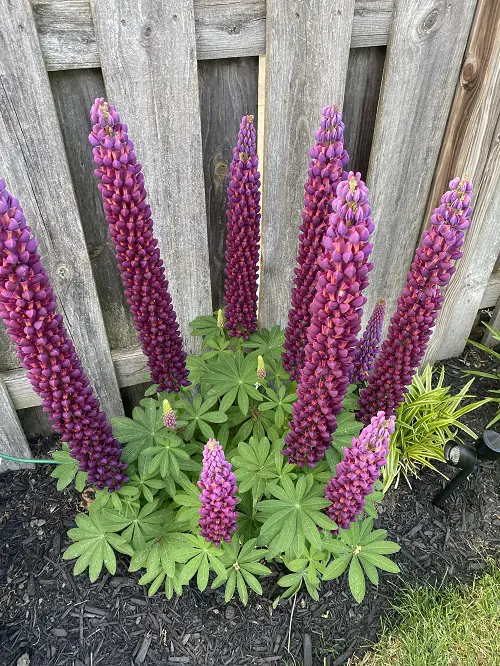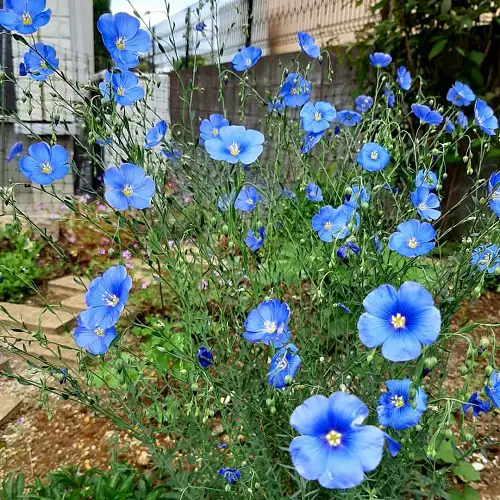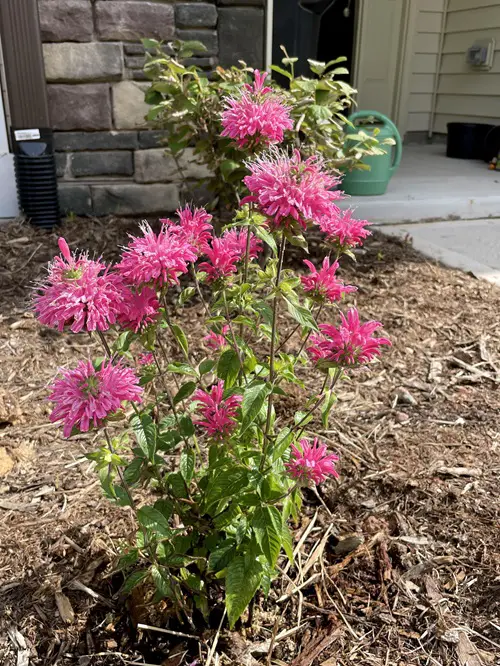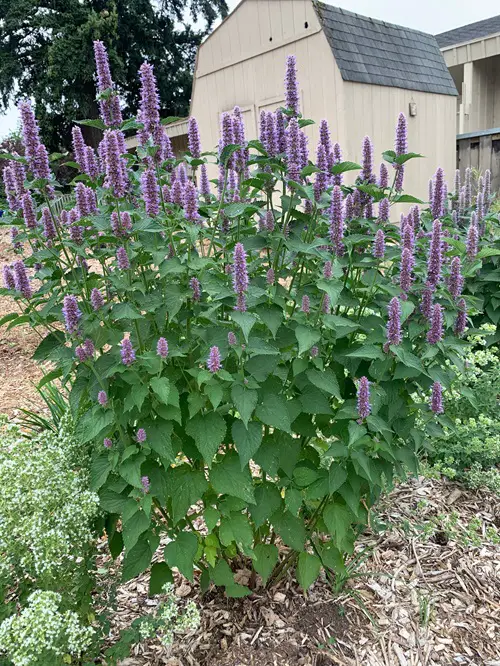Pick native species for a garden that lures in butterflies and birds. This list of Wildflower Seeds to Plant in December will get you started!
A crucial source of survival for birds, insects, and small mammals, growing native plants at home is one of the best things you can do for the environment! Stunning and beneficial, here’s our selection of wildflower seeds you can plant this December—even in the cold!
Why Sow Wildflower Seeds in Fall and Winter?
Wildflower seeds need a period of cold stratification and dormancy in wet, freezing weather to germinate. The chilly months between December and February allow this cold stratification in seeds.
They have a waxy coating that protects them from the cold while helping them sprout better. The alternate freezing and thawing of frost on the ground slowly breaks down these outer layers of the seeds and helps them contact the soil.
Wildflower Seeds You Can Plant in December
1. Lupine

Botanical Name: Lupinus spp.
USDA Zones: 4-9
Attracting hummingbirds and butterflies, this hardy wildflower pushes out tall, conical flower spikes in blue, white, purple, gold, and pink in spring and summer. A showy front-runner that stands out, this drought-tolerant perennial often warrants a double take!
When sowing lupine seeds, choose a sunny spot with average soil and loosen it to a depth of about a quarter inch. Make sure the soil has not been composted or amended, and water the seeds once so the soil is evenly moist when you plant.
2. Butterfly Weed
Botanical Name: Asclepias tuberosa
USDA Zones: 3-9
If you want to attract more Monarch butterflies to your garden, grow butterfly weed! This milkweed variety has vivid orange to yellow flowers rich in pollen and nectar that pollinators love. For recurring blooms year after year, plant seeds in December.
Choose a spot with full sun, scatter the seeds, and cover them lightly with a quarter-inch of soil. They generally need about three months of cold stratification to germinate.
3. Columbine

Botanical Name: Aquilegia
USDA Zones: 3-9
This perennial wildflower, which produces pink, purple, burgundy, and white bell-shaped blooms in spring and summer, grows freely in meadows, woodlands, and high altitudes in the Northern Hemisphere. Its seeds need about 60 days of cold for robust growth.
Scatter the seeds lightly on top of the soil in a sunny spot to a depth of about 1/8 inches during early winter. This depth allows them enough light for germination while protecting them from being eaten by birds.
4. Blue Flax

Botanical Name: Linum perenne
USDA Zones: 4-9
If the flax’s airy stems and pretty, tufted sky-blue flowers make you think it’s a delicate plant, don’t be fooled! This plant, especially cultivars like the Blue Sapphire, Prairie, or Wild Blue Flax, tolerates heat, cold, and drought!
When sowing flax seeds in December, gently tamp them down so they contact the soil but are not fully covered up. Water the area well, but don’t accidentally wash away the seeds!
5. Coreopsis

Botanical Name: Coreopsis lanceolata
USDA Zones: 3-9
When creating a wildflower garden, you cannot miss out on coreopsis! Native to the south-central US, it produces beautiful daisy-like flowers in the summer, attracting pollinators like bees and butterflies.
In December, sow seeds in a spot that gets dappled sunshine. Sow them in moist soil, but ensure they aren’t too deep—just enough to shield them from birds.
6. Black-eyed Susan
Botanical Name: Rudbeckia spp.
USDA Zones: 3-10
You can sow rudbeckia seeds in December in areas without danger of frost, such as zones seven and above. Though some prefer to broadcast seeds, birds will likely get to them before they sprout.
Depending on the rudbeckia variety you pick, the seeds will need about 30-60 days of chilling. After the temperature warms up to 60 F (15 C), your seeds will sprout within 8-14 days. Here’s what to do with them once they flower.
Pro Tip: Not all areas are suitable for winter sowing. If it’s very cold outside, seeds may not survive. Research what works best in your specific location.
7. Purple Coneflower
Botanical Name: Echinacea purpurea
USDA Zones: 3-9
For a garden filled with songbirds, hummingbirds, butterflies, and bees, sow coneflower seeds in December. Native to central and eastern USA, this wildflower’s seeds don’t need it but certainly benefit from cold stratification to germinate better.
Purple coneflowers can thrive in upcycled containers such as discarded milk jugs and boxes just as easily as in direct garden soil, as long as it is moist.
8. Blanket Flower
Botanical Name: Gaillardia aristata
USDA Zones: 3-9
Gaillardia seeds usually need at least a 30-day cold-stratification period. However, if you have bought seeds with a dry storage period of three months or more, you can skip the process altogether. These wildflowers need full sun to flourish.
Once daytime temperatures remain consistently above 70 F (21 C), your seeds will germinate in 7-20 days.
9. Betony

Botanical Name: Stachys officinalis
USDA Zones: 4-9
A hardy perennial herb in the mint family, betony can be a fantastic choice when choosing wildflowers for your garden. Thanks to their abundant, small red-purple to pink flowers, they look great when mass-planted in garden borders.
Before you sow betony seeds, prepare the patch of soil by removing weeds. Then, amend the soil by raking it to mix organic matter into the top 6-8 inches.
10. Yarrow

Botanical Name: Achillea spp
USDA Zones: 3-9
Yarrow is a super-hardy wildflower that has tons of benefits, beside their pretty pink flowers that turn white with maturity. This drought-tolerant perennial helps attract beneficial insects and is an excellent companion to brassicas, arugula, and other veggies.
A robust ground cover, this edible herb flourishes in sandy soil with excellent drainage. Keep the medium slightly moist to prevent the seeds from getting swept away by the wind.
11. Shasta Daisy
Botanical Name: Leucanthemum × superbum
USDA Zones: 4-9
Featuring classic white petals and a bright yellow center, Shasta daisies are pretty low-maintenance, hardy, and reseed easily in most zones. This wildflower needs ample sunshine and moist soil to germinate; sow seeds near the soil surface.
Depending on where you live, the seeds will sprout in 15-21 days if the soil temperature is favorable.
12. Anise Hyssop
Botanical Name: Agastache foeniculum
USDA Zones: 3-8
With spiky blue flowers and fragrant foliage, the anise hyssop is an excellent choice for adding vertical interest to your garden as it grows 2-4 feet tall.
These flower seeds need a cold-stratification period of about a month, after which they germinate in 1-4 weeks. Ensure you cover them up nicely, as birds love to feast on them.
13. Bee Balm

Botanical Name: Monarda didyma
USDA Zones: 4-9
A perfect addition to iced teas, cocktails, and teas, bee balm is an efficient mint substitute that thrives in full sun and well-draining, rich, moist soil. Though it does not need a dormancy period, about 3-4 weeks of cold stratification can improve germination rates.
Their sowing window is late fall through December. Opt for a glasshouse to grow seeds and water every 15 days.
14. Bellflower

Botanical Name: Campanula glomerata
USDA Zones: 3-8
Bellflowers are incredibly versatile and can reward you with beautiful purple, blue, and white flowers, depending on the variety. They can be perennials, biennials, or annuals depending on the area in which you live.
The best temperature for these seeds to germinate is 60-68 F (15-20 C). Covering the seeds with vermiculite helps them retain moisture and stay in place.
15. Creeping Phlox
Botanical Name: Phlox subulata
USDA Zones: 3-9
The phlox, with its tall, thick columns of flowers, is the perfect plant for simple beauty. If grown as a perennial, phlox varieties need 60 days of cold stratification for the seeds to break out of their dormancy.
Phlox seeds prefer moist soil rich in organic matter, such as well-rooted manure and garden compost.
Pro tip: Since darkness is an important factor in phlox germination, make sure you cover the seeds well with soil so light cannot pass through.









